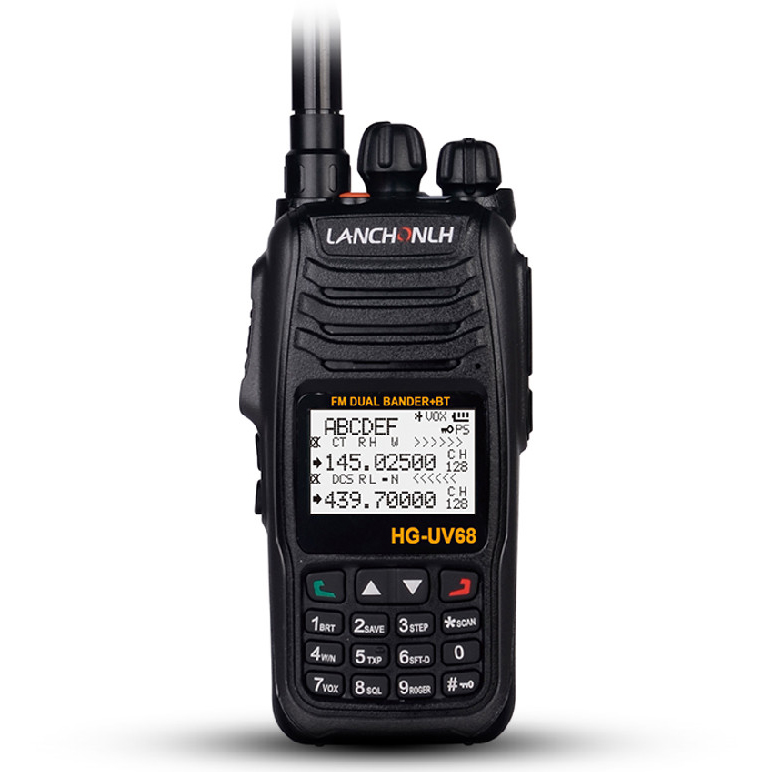
- English
- Español
- Português
- русский
- Français
- 日本語
- Deutsch
- tiếng Việt
- Italiano
- Nederlands
- ภาษาไทย
- Polski
- 한국어
- Svenska
- magyar
- Malay
- বাংলা ভাষার
- Dansk
- Suomi
- हिन्दी
- Pilipino
- Türkçe
- Gaeilge
- العربية
- Indonesia
- Norsk
- تمل
- český
- ελληνικά
- український
- Javanese
- فارسی
- தமிழ்
- తెలుగు
- नेपाली
- Burmese
- български
- ລາວ
- Latine
- Қазақша
- Euskal
- Azərbaycan
- Slovenský jazyk
- Македонски
- Lietuvos
- Eesti Keel
- Română
- Slovenski
- मराठी
- Srpski језик
How to Choose the Right Analog Radio Walkie Talkie for Your Needs
2025-01-07
When it comes to communication in the workplace, outdoor activities, or emergency situations, analog radio walkie talkies are often the go-to solution. These simple, reliable devices allow individuals to stay connected over short to medium distances without relying on cellular networks or Wi-Fi. Whether you're organizing an event, working on a construction site, or exploring the outdoors, choosing the right analog radio is essential for effective communication. In this blog post, we’ll guide you through the process of selecting the ideal analog walkie talkie for your needs.

Factors to Consider When Choosing an Analog Radio Walkie Talkie
1. Range and Coverage Area
One of the most important factors when selecting an analog radio is the range it can cover. Analog radios can operate over a wide range of distances, from a few hundred meters to several kilometers, depending on the model. If you’re using the radios in a large building or on a construction site, you may need a model with a longer range. For outdoor use, such as hiking or camping, look for radios with higher coverage to ensure you can communicate even in remote areas.
- Short-range radios (less than 1 mile) are ideal for smaller spaces like warehouses or offices.
- Mid-range radios (1 to 5 miles) work well in urban environments or on event grounds.
- Long-range radios (over 5 miles) are best for outdoor use or large areas.
2. Battery Life
Battery life is another crucial factor, especially if you’re using your walkie talkie for extended periods. Analog radios generally have longer battery life compared to digital models, but the battery performance can vary based on the type and usage. Look for a model with a battery life that suits your usage requirements—whether you're working an 8-hour shift or going on a multi-day outdoor adventure. Some radios offer rechargeable batteries, while others use disposable ones.
3. Durability and Build Quality
Depending on your environment, durability may be a key consideration. If you're working in a rugged construction site or hiking through the wilderness, you'll want a walkie talkie that can withstand drops, shocks, and exposure to the elements. Many analog radios are designed with durable, water-resistant, and dustproof housing to ensure they continue to perform even in tough conditions.
- IP ratings: An IP67 rating means the radio is waterproof and can withstand being submerged in water for a short period, while an IP54 rating offers some protection from dust and light rain.
- Shockproof design: Look for radios with reinforced cases and durable buttons.
4. Size and Weight
Analog walkie talkies come in a range of sizes, from compact handheld models to larger, bulkier versions. The size and weight of the radio will affect how comfortable it is to carry around, especially if you're going to be using it for hours at a time. For outdoor adventures or situations where you need to be mobile, lightweight and compact models are often the best choice. However, larger models might provide additional features and longer battery life.
5. Frequency and Channels
Analog radios operate on different frequency bands, typically either UHF (Ultra High Frequency) or VHF (Very High Frequency). UHF radios are better suited for urban environments or areas with lots of obstacles like buildings or mountains, while VHF radios excel in open areas or long-distance communication. Be sure to choose a radio that operates on the frequency most appropriate for your environment.
- UHF (400-470 MHz): Ideal for urban settings and indoor use.
- VHF (136-174 MHz): Best for outdoor use, especially in rural or open areas.
6. Additional Features
While analog radios are generally simple, some models come with extra features that can enhance their usability. Look for radios with features like:
- Voice activation (VOX): Allows hands-free communication, which is especially useful when you’re busy or need to keep both hands free.
- LCD screens: Some radios come with small screens that display battery life, channel, and other important information.
- Emergency features: Some models have built-in flashlights, weather alerts, or emergency channels for critical situations.
---
Conclusion: Finding the Best Analog Radio Walkie Talkie for Your Needs
Choosing the right analog radio walkie talkie ultimately depends on your specific needs. Whether you're communicating in a crowded urban space, hiking through remote trails, or managing a construction site, there's a model out there that can help keep you connected. By considering factors like range, battery life, durability, and additional features, you can ensure that your walkie talkie meets your communication requirements. With the right analog radio,
Quanzhou Lianchang Electronics Co., Ltd., formerly known as the IOT Communication Studio, was established in 2010. Its main programs include Explosion Proof Walkie Talkies, Analog Radio Walkie Talkies, PDT/DMR Digital Walkie Talkies, DMR digital plus analog interphones, analog interphones with APRS functions, analog dual segment (traditional lines, integrated lines) interphones, analog single segment (traditional lines, integrated lines) interphones, vehicle mounted interphones, pure public network interphones, public network plus analog interphones, etc.
Visit our website at https://www.qzlianchang.com/ to learn more about our products. For inquiries, you can reach us at QZLCDZ@126.COM.



